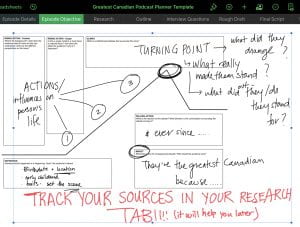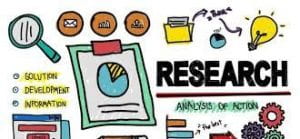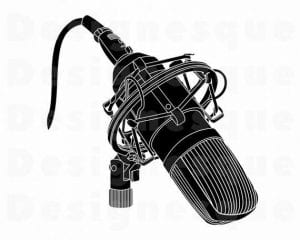The phrase “The Greatest Canadian” can mean a lot of different things. Greatness comes from their personality and willingness to speak up & give to others. It is the amount of success in their career and how they have changed the world. Following up on the last project we would create the first episode of our podcast, on the “Greatest Canadian.”
Podcasts limit diversity but allows more thought put into the audio telling a story. Easier than a video, it provides more time spent on your script and audio quality. Despite being easier, doesn’t mean it is easy as you have to make people visualize what you are saying and paint a picture for them.
The Greatest Canadian for me? Steve Nash.
Steve Nash, an under-appreciated great, had all-time great talent and impacted the game significantly – much like his willingness to stand up for injustice and give to others. He has made a path for Canadian prospects and the NBA is now filled with young up and coming Canadian players. Helping second and third world countries, Nash is an avid humanitarian and speaks up against injustice.
The podcast I created is centred around what makes someone go from good to great. In a little over 10 minutes, I shared why Steve Nash is the greatest Canadian in my eyes. Conveying the message, through audio provided its disadvantages but looking back, I’d say it was fun making the episode. Combining three piano tracks, a bunch of editing and lots of hours making the podcast, I thought I told a convincing story.
Draft 1 to the finished product was a completely different product but the message was kept intact, only more strongly portrayed. There were many minor changes throughout the process but the one thing that held back the podcast was the long section of my interview without my voice. Once I broke up the pieces it sounded a lot more fluid and was easier to listen to. Making that change amplified both the interview and the message being told in the episode.

- October 16
Milestone 1 | Need to Know Questions
Milestone 1 | Need to Know Questions
October 16, 2020 After looking through the project and the driving question. What do you KNOW? What do you need to know? What are our immediate next steps?
After looking through the project and the driving question. What do you KNOW? What do you need to know? What are our immediate next steps? - October 19
Chose Individual
Chose Individual
October 19, 2020
Generally, determining historical significance comes down to a certain criteria. Some of these categories may outweigh one another, but they are related. (more…)
- October 22
Milestone 2 | Story Mountain
Milestone 2 | Story Mountain
October 22, 2020
Use your understanding of our short story mountain to develop the story mountain of your individual’s life. We will begin to structure our podcast soon! But let’s first be able to map out (in bullet points) what we need to know about our individual.
- October 26
Milestone 3 | Topic Research + Notes
Milestone 3 | Topic Research + Notes
October 26, 2020
Part ONE: Take Notes
Over 5 classes, you will be attending a series of lectures and readings. Each lecture will roughly cover and get you thinking about a chapter in our textbook. These chapters will help you begin to understand our time frame we are discussing. Use the notes to guide your argument around your individual.Part TWO: Research
Outside of taking notes on our lectures (which you will be handing in), begin to narrow down your own options. Using the story mountain as a guide, the facts you know about this individuals life, dive deeper. What significant events can you find more info on? - October 29
Milestone 4 | Podcast Script
Milestone 4 | Podcast Script
October 29, 2020
Part ONE: Interview BIO and Questions
Who will you interview for this project? Be sure to contact them as soon as you determine who they are! Email, phone, stop by! Submit your Interview Questions and confirmation to showbie.Part TWO: Podcast Structure and Outline
Create an episode structure with bullet points. This Outline is due on Tuesday, Oct. 27. Once you feel confident about your outline, write a Rough Draft of your Script. Record the ENTIRE thing in your Numbers Podcast Planner.Details About Your Recorded Read Through:
– don’t have an interview yet – tell me where you want it to go!
– Need to record some Source Material- mention where you will put it!
– be ready to share your Recorded Script in class on Wednesday, Oct. 28On Wednesday, Oct. 28 – we will be finding some “Critical Friends” to help us out!
Part THREE: Submit your SCRIPT to Showbie.
Remember all the important aspects of a Podcast Script. - November 6
Milestone 5 | Completed Podcast
Milestone 5 | Completed Podcast
November 6, 2020 For this Milestone you will be creating your Podcast. This is when recording source material, conducting your interview, and sharing with peers your Podcast all comes into play.This weekend and the first half of next week should be spent recording your source material. Your audio should be ready to edit by Wednesday at the latest.
For this Milestone you will be creating your Podcast. This is when recording source material, conducting your interview, and sharing with peers your Podcast all comes into play.This weekend and the first half of next week should be spent recording your source material. Your audio should be ready to edit by Wednesday at the latest.On Wednesday, be ready to share your rough audio:
• Opening Script
• Ambience Music
• Transition Music
• Interview FOOTAGE
• As much of your podcast that you can showFor Thursday and Friday, you will EDIT your podcast and create your Podcast Artwork. Be sure to remember our discussions on “Editing a Podcast” which can be found in Learner Central. - November 13
Milestone 6 | Final Podcast and Interviewee Presentation
Milestone 6 | Final Podcast and Interviewee Presentation
November 13, 2020You were given a challenge to determine the SIGNIFICANCE of a person, place, event, or trend and how it makes Canada the nation it is today.After presenting to your peers, you will be sending the final episode to your interviewee. Be sure to get their contact information at the interview.
My podcast only came together when the music, the voice tracks, the interview and the editing was finished.
Editing took forever. Every little mistake took time, adding up to take most of my revisions. Taking into account the exporting time and it was a nightmare if I exported my episode and later found a tiny mistake midway through the song. EQs were an important factor in improving noise quality and removing the telephone grainy noise. I used an external plugin called “LRC5” to get a more refined result as the apple visual EQ has a limit. Honestly, I learnt very few skills in GarageBand as I have done many previous projects using it. However, I did learn what tools in GarageBand to use for a podcast and how to balance everything. Equalization was arguably the most important part of the editing. Even though the changes are very little, it can make the difference between good and great podcasts.
As per the interview, I took a very different approach to how I organized the clips. Using an app called “Otter” I was able to convert my audio into text so I could better organize the interview without including unnecessary points, repetition or out-of-context ideas. I had 20 minutes of source material and I needed to make it preferably 5 minutes or less to fit into our time constraints. Using the text I planned where I was going to add my interview clips to make the most sense, and then arrange it in GarageBand afterwards.
Creating music I decided to use my MIDI keyboard again and play smooth jazz for the background. The edit feature when playing was very useful if I played a wrong note or played something out of time. The two tracks sounded good and I thought matched the tone I was going for. Though it got pretty distracting at times, I was able to fix this by turning down the volume at parts.
The technology was the backing of the whole project and it wouldn’t be possible to create an engaging podcast, let alone an online podcast. GarageBand was behind all of the editing and music creation. Though it doesn’t provide all the features with a high-end program has, it makes up for it being simple and having the ability to download plugins. I have refined my skills to make use of my time and I am pretty sure I know everything single tool in GarageBand. Using all these tools I created a podcast to share my thought on the greatest Canadian.
Highlighting one of the best ways I comprehended text was through my interview. Using audio to text app and then organizing the text, rather than the audio, helped me understand it more in-depth. The result came out taking way less time and a concise result. Another way we looked at text was through our textbook lectures for building knowledge. In groups, we discussed the topics and use the text features to further identify the importance of the matter.
Creating the podcast was another unique experience that we are going to continue through this year. Despite still having small mistakes in the episode, I am happy how it turned out in the end. The next episode will be about WW2 and I am curious how I can make an episode centring around my topic.






November 20, 2020 at 7:49 pm
Great reflection Anders! I appreciate that your recognize the difficulties of creating a podcast episode, but ultimately you worked through it! With drafts and peer feedback, you created an awesome episode. Thanks for sharing!